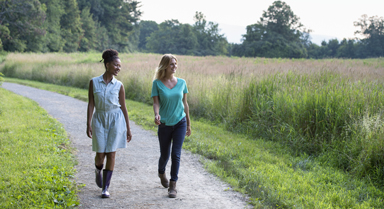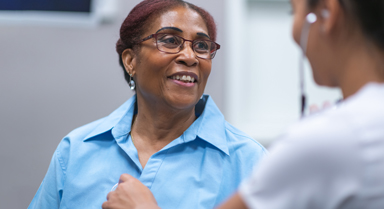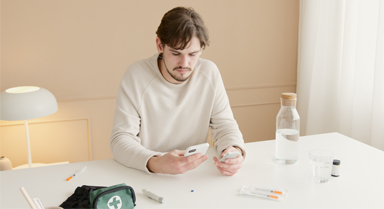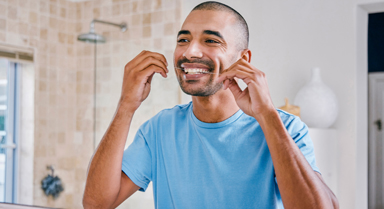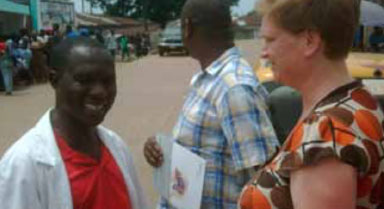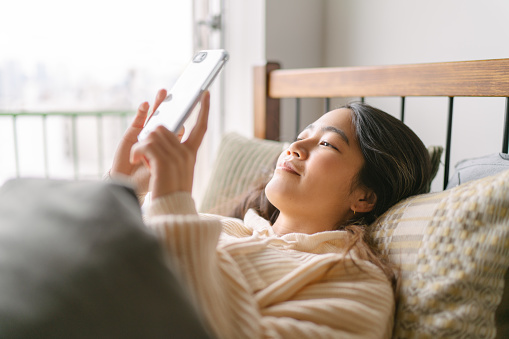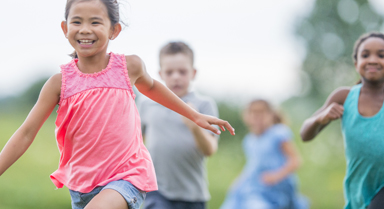Did you know?
- Skin cancer is the most common type of cancer.1
- The main types of skin cancer are squamous cell carcinoma, basal cell carcinoma, and melanoma.1
- Most deaths from skin cancer are caused by melanoma.1
- Sunburn is a sign of short-term overexposure, while premature aging and skin cancer are side effects of prolonged UV exposure.2
- UV exposure increases the risk of potentially blinding eye diseases if eye protection is not used.2
- Overexposure to UV radiation can lead to serious health issues, including cancer.2
Test your sun smarts and learn a few new tricks with our Beat the Heat Quiz.
Skin cancer – help protect your skin
Excessive exposure to the sun and its ultraviolet (UV) rays can cause skin cancer. You can reduce your risk for skin cancer by: 3
- Protecting your skin, and that of your family members, from UV radiation
- Performing frequent skin self-examinations
- Finding out whether you have an increased risk for melanoma and other skin cancers
How do I protect my skin from UV radiation and skin cancer?
You can take steps to protect your skin from UV radiation. While sunscreen plays a vital role in protecting your skin from UV radiation, it can't prevent skin damage if you are exposed to the sun's rays for long periods of time. Experts recommend that you use multiple methods to fully protect your skin.
Preventing skin cancer isn't always possible. But being alert for new spots or skin growths and having your doctor check your skin regularly may help find skin cancer early when it can be more easily treated.
Protect your skin
- Stay out of the sun during the peak hours of UV radiation, from 10 a.m. to 4 p.m.
- Wear protective clothing:
-
- Wide-brimmed hats that protect the face and neck
- Tightly-woven clothing made of thick material, such as unbleached cotton, polyester, wool, or silk
- Dark clothing with dyes added that help absorb UV radiation
- Loose-fitting long-sleeved clothing that covers as much of the skin as possible
- Clothing that has sun protection factor (SPF) in the fabric that does not wash out
- Wear sunscreen with an SPF of 30 or higher, summer and winter, on both cloudy and clear days.
- Apply sunscreen that blocks both UVA and UVB radiation to all exposed skin, including lips, ears, back of the hands, and neck. Apply sunscreen 30 minutes before going in the sun, and reapply it every two hours and after swimming, exercising, or sweating.
- Wear wraparound sunglasses that block at least 99% of UVA and UVB radiation.
- Be careful when you are on sand, snow, or water, because these surfaces can reflect 85% of the sun's rays.
- Avoid artificial sources of UVA radiation, including sunlamps and tanning booths. Like the sun, they can cause skin damage and increase the risk of skin cancer.
A child's skin is more sensitive to the sun than an adult's skin and is more easily burned. Babies younger than 6 months should always be completely shielded from the sun. Children 6 months and older should have their skin protected from too much sun exposure.
Know the ABCDEs of early detection
Skin cancer can be cured if found and treated early. If it is not discovered or treated until too late, it can spread throughout the body and may be fatal. Skin cancer often appears on the trunk of men and on the legs of women. Learn your ABCDEs, the changes in a mole or skin growth that are warning signs of melanoma:
- Asymmetry: One half doesn't match the other half.
- Border irregularity: The edges are ragged, notched, or blurred.
- Color: The pigmentation is not uniform. Shades of tan, brown, and black are present. Dashes of red, white, and blue add to the mottled appearance. Color may spread from the edge of a mole into the surrounding skin.
- Diameter: The size of the mole is greater than 6 mm (0.2 in.), or about the size of a pencil eraser.
- Evolution: There is a change in the size, shape, symptoms (such as itching or tenderness), surface (especially bleeding), or color of a mole.
Skin cancer, including melanoma, is curable if spotted early. A careful skin exam may identify suspicious growths that may be cancer or growths that may develop into skin cancer (precancers).
- Examine your skin regularly. Get to know your moles and birthmarks. And look for any abnormal skin growth and any change in the color, shape, size, or appearance of a skin growth.
- Check for any area of skin that does not heal after an injury.
- Have your doctor check your skin during any other health exams. Most experts recommend having your skin examined regularly.
- Bring any suspicious skin growths or changes in a mole to the attention of your doctor.
For additional information on Radiation: Ultraviolet (UV) radiation and skin cancer please read this article from the World Health Organization.
Also, if you have questions about sun protection, skin cancer or any other type of cancer, contact your health care provider for advice and support.
1. National Cancer Institute. Skin Cancer (Including Melanoma) – Patient Version. https://www.cancer.gov/types/skin. Accessed on July 14, 2023.
2. Centers for Disease Control and Prevention. UV Radiation. https://www.cdc.gov/nceh/features/uv-radiation-safety/index.html#:~:text=times%20a%20week.-,Risks,serious%20health%20issues%2C%20including%20cancer. Last Reviewed July 3, 2023.
3. Cigna Knowledge Center, Wellness Library. Skin Cancer: Protecting Your Skin. https://www.cigna.com/knowledge-center/hw/medical-topics/skin-cancer-uh1310. Last Reviewed September 8, 2021.
Offered by Cigna Health and Life Insurance Company or its affiliates.
This information is for educational purposes only. It's not medical advice. Always consult with your health care provider for appropriate examinations, treatment and health care recommendations.
This article serves only as a reference and is intended for informational purposes only. Nothing in this article constitutes legal, tax, financial planning, health or medical advice including diagnosis or treatment. Always seek the advice of your physician or other qualified health provider with any questions you may have regarding a medical condition. References to third-party organizations or companies, and/or their products, processes or services, do not constitute an endorsement or warranty thereof. Products and services may not be available in all jurisdictions and are expressly excluded where prohibited by applicable law. All group insurance policies and health benefit plans contain exclusions and limitations. For costs and details of coverage, contact a Cigna Healthcare representative.
Cigna Healthcare products and services are provided exclusively by or through operating subsidiaries of The Cigna Group, including Cigna Health and Life Insurance Company, Life Insurance Company of North America, Cigna Global Insurance Company Limited, Evernorth Care Solutions, Inc., Evernorth Behavioral Health, Inc., or through their affiliates and contracted companies.










